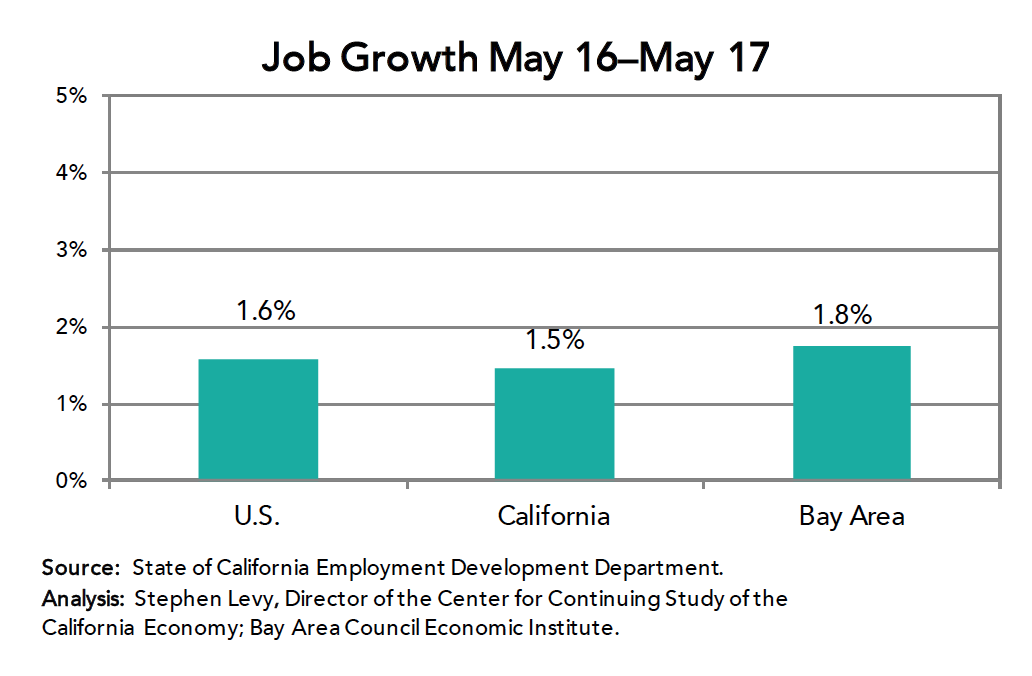
The California Employment Development Department (EDD) has released job and labor force estimates for May 2017. Here are the highlights:
- Job growth in the Bay Area and state has slowed since January…
- Unemployment and unemployment rates have reached the lowest levels since the dot.com boom and labor force growth has disappeared at least temporarily.
- Job openings nationally are at record levels at the same time unemployment is low and labor force growth is slowing.
Before summarizing the recent data, this brief looks at the strength and vigor of the regional economy over the period since 2012.
The state accounted for 17.1% of U.S. job growth and 23.6% of national GDP growth between 2012 and 2016 while representing between 11% and 12% of national jobs and population. The Bay Area with 2.5% of U.S. jobs in 2012 accounted for 4.8% of national job growth and the rest of the state also outpaced the nation in job growth. The Bay Area also accounted for an above-average share of GDP growth.
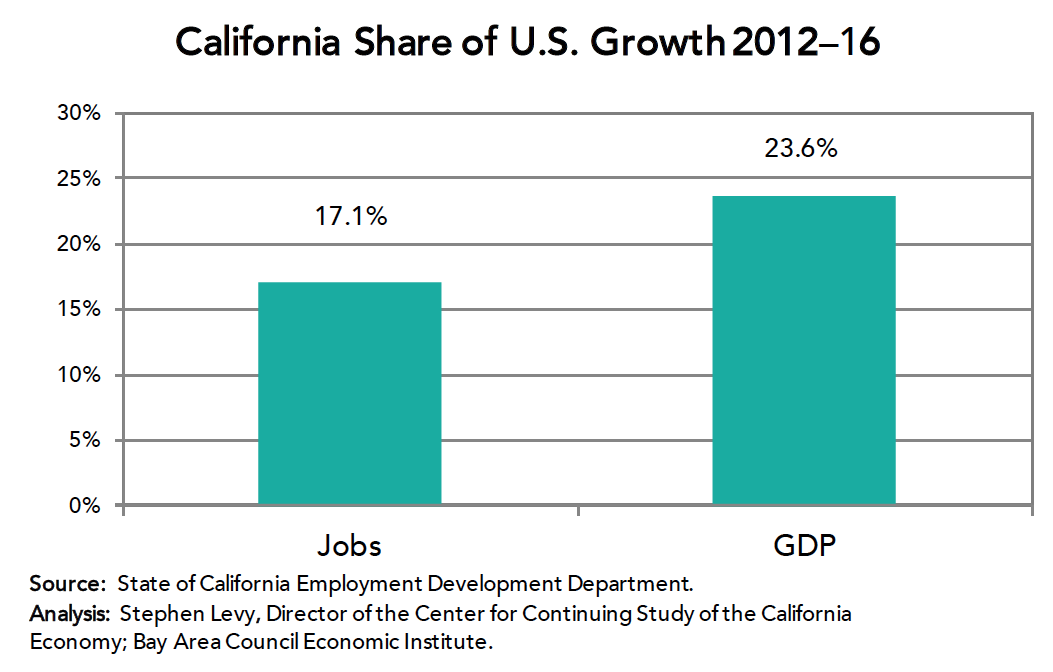
A High and Rising Share of Fast Growth Sectors
The state has a high share of fast growing basic (export oriented) sectors, many concentrated in the Bay Area and California increased its share of national jobs in many key sectors between 2007 and 2016.
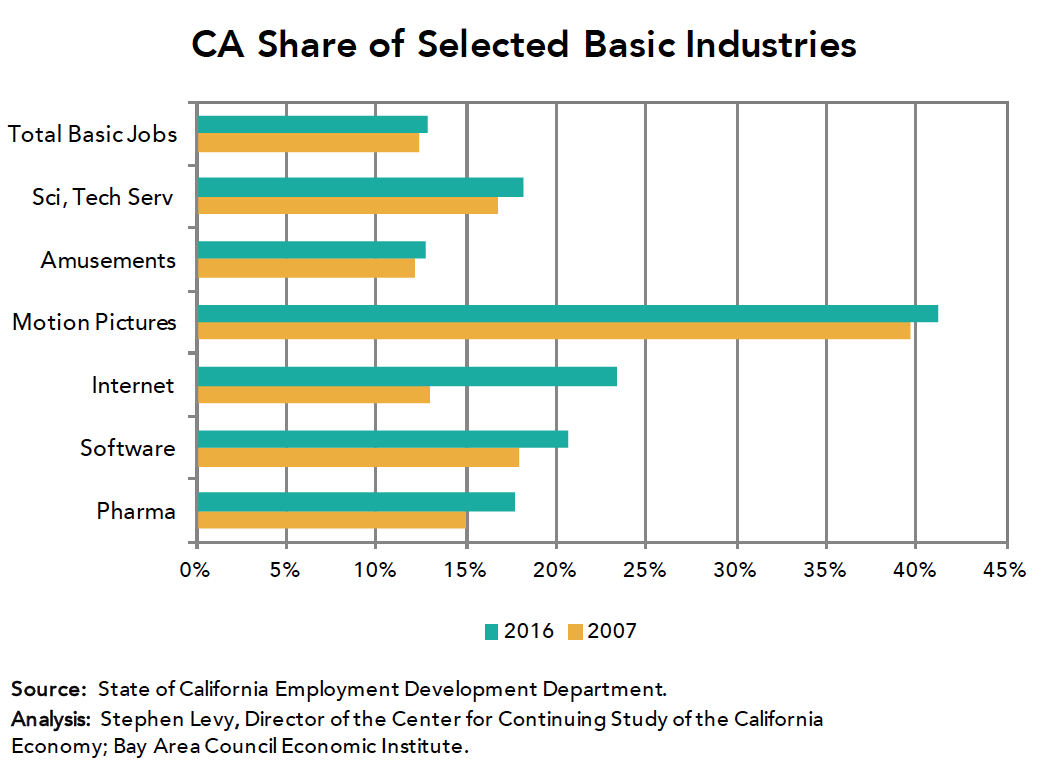
These gains pushed the state’s share of total U.S. jobs to 11.8% in 2016, a record, from 11.4% in 2012.
The state and Bay Area economic strength in the face of strict air quality regulations, high and rising housing costs and state and local tax increases, lend perspective to two national policy issues.
The Bay Area this month achieved compliance with two more federal air quality standards and the Air Resources Board announced that both total and per capita GHG emissions are declining. At the same time the region is attracting company after company taking advantage of our labor force to innovate in a variety of clean tech endeavors.
These trends show that helping the environment is consistent with, and will be helped by in the long run, policies to promote energy efficiency and air quality.
The second point is that the Bay Area and state economies are critical to U.S. economic growth. That is what the 17.1% of job growth and 23.6% of GDP growth tell us. That means that policies that could hurt our economy like restrictive trade and immigration policies, will also retard national economic growth. Our economies are connected.
Looking at the Bay Area Slowdown
Job growth has slowed. The Bay Area still outpaces the nation in job growth in May 2017 but barely and state growth lags the nation for the first time in several years.
Job growth is slowing throughout the region. For the past 12 months only the Oakland, San Francisco and Napa metro areas have added jobs at a faster pace than the nation.
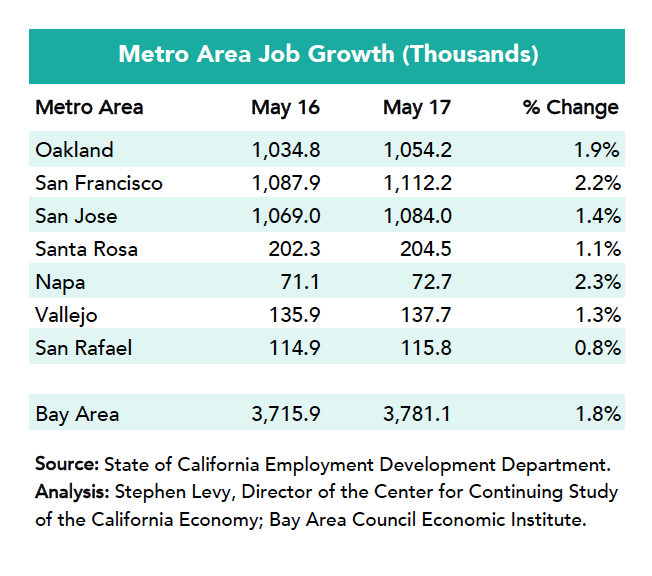
At the same time unemployment rates have declined sharply throughout the region to the lowest levels since the dot.com boom.
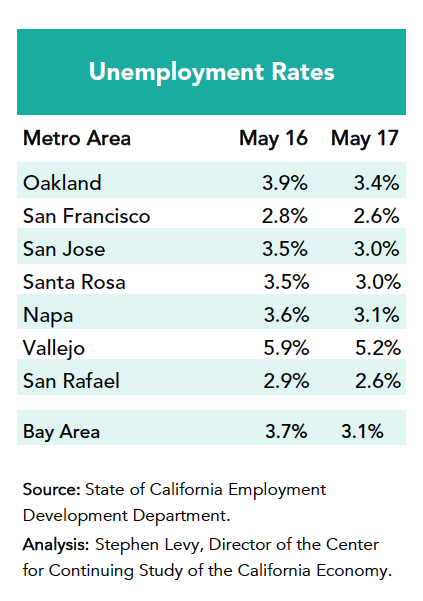
While unemployment and unemployment rates have declined, labor force growth has shrunk to 0 for the past 12 months. This has created a very tight labor market where finding workers has become more difficult.
Job growth levels have declined sharply since last May from near 130,000 on a year over year basis to roughly half that level.
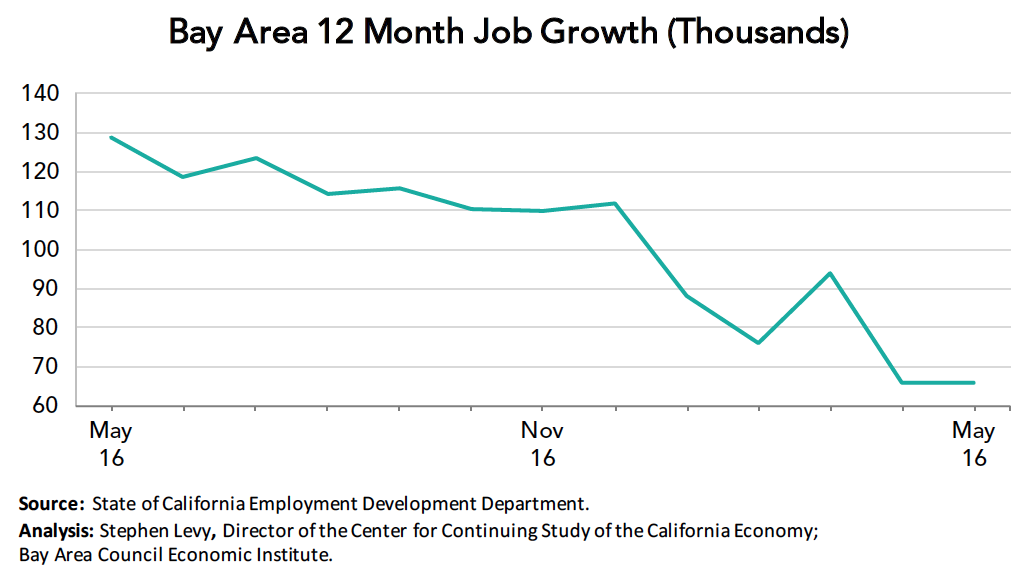
Is the slowdown a sign of serious trouble ahead or is this a temporary bump in the road.
Job growth will slow in the nation, state and region going forward as labor force growth slows with more boomers retiring.
But this week alone has brought positive signs for the region’s future.
- Google is exploring a very large (20,000 job) expansion around Diridon station in San Jose that will, if completed, bring additional housing and retail activity,
- Alphabet announced plans to add 300 modular units to the Moffett Field development in a test of whether modular units can be an important part of reducing the cost of housing in the region
- The federal government announced that for now “dreamers” will be allowed to learn and earn
Last week Jeff Bellisario, one of the Institute’s co-authors of the Megaregion study came to an expert panel meeting I ran for the Sacramento Area Council of Governments in preparing their upcoming regional transportation and sustainable communities plan. The meeting, with Jeff’s help, explored the possibilities for improved economic competitiveness in the two regions through better Bay Area/Sacramento region connections.
Thanks, Jeff.